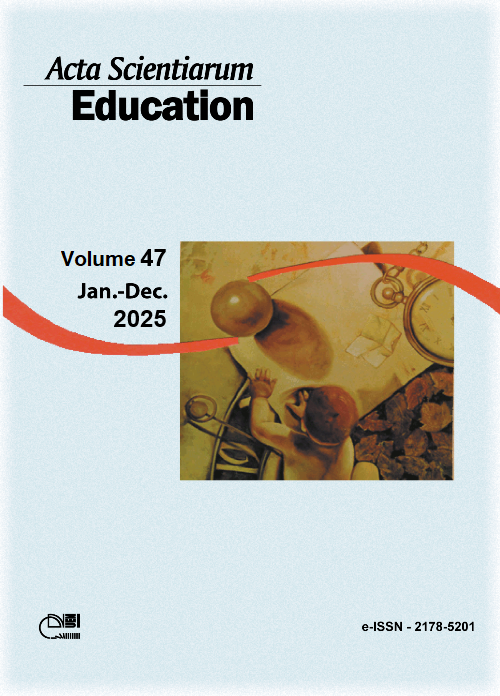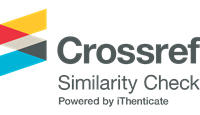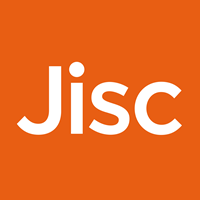The choice of teaching as a possible career: the role of social origin and gender in science teachers' retention
Abstract
Several countries have struggled for attracting and retaining qualified teachers, especially in the science teaching, which are moving away from this career due to low compensation and other opportunities. In this scenario, it is essential to understand what influences teachers to choose and stay in the teaching career. In this study we investigate what influences the choice of the teaching career and persevering in it. From the literature on the field, we list five motivational elements that impact the teacher’s choice: love, care, ability, calling, and profession. Using Bourdieu's theory, we interpret this process highlighting the role of social origin and gender. In-depth interviews were conducted with four Brazilians teachers and their sociological portraits were elaborated. The results show that the choice of teaching is not free or deliberate, but conditioned by the different elements mentioned above, intrinsically related to the teacher's trajectory. Given socioeconomic and gender conditions for choosing profession, the real and potential work possibilities, professional and personal expectations, teaching has become the best professional option, the dream to be achieved. In addition to exploring a relational sociological analysis of the elements that lead teachers to choose and stay in the profession and showing how the decadent context of the profession affects teachers’ actions, the implications of this study reinforce the need to make the teaching career more attractive to subjects from different genres and social backgrounds.
Downloads
References
Agostini, G. (2019). Trajetórias de professores de química: uma análise sociológica dos condicionantes sociais para as escolhas da docência como profissão [Dissertação de Mestrado, Universidade Estadual Paulista].
Asimaki, A., & Vergidis, D. K. (2013). Detecting the gender dimension of the choice of the teaching profession prior to the economic crisis and IMF (International Monetary Fund) memorandum in greece-a case study.International Education Studies, 6(4), 140-153. https://doi.org/10.5539/ies.v6n4p140
Archer, L., DeWitt, J., Osborne, J., Dillon, J., Willis, B., & Wong, B. (2013). ‘Not girly, not sexy, not glamorous’: primary school girls’ and parents’ constructions of science aspirations. Pedagogy, Culture & Society, 21(1), 171-194. https://doi.org/10.1080/14681366.2012.748676
Bourdieu, P. (1984). Distinction: a social critique of the judgement of taste. Harvard University Press.
Bourdieu, P. (2013). Outline of a theory of practice (Cambridge studies in social anthropology, 16). Cambridge University Press.
Bourdieu, P. (2015). Futuro de classe e causalidade do provável. In M. A. Nogueira, & A. Catani (Eds.), Escritos de educação (pp. 89-142). Vozes.
Bourdieu, P., & Wacquant, L. J. D. (1992). An invitation to reflexive sociology. University of Chicago Press.
Brasil. (2018). Censo escolar 2017: notas estatísticas. INEP. https://bitily.me/fMzdO
Butler, R. (2017). Why choose teaching, and does it matter?. In H. M. G Watt, P. W. Richardson, & K. Smith (Edds.), Global Perspectives on Teacher Motivation (pp. 377-388). Cambridge University Press.
Costa, A. F., & Lopes, J. T. (2011). The diverse pathways of higher education students: a sociological analysis on inequality, context and agency. Portuguese Journal of Social Sciences, 10(1), 43-58. https://doi.org/10.1386/pjss.10.1.43_1
Davoglio, T. R., Spagnolo, C., & Santos, B. S. (2017). Motivação para a permanência na profissão: a percepção dos docentes universitários. Psicologia Escolar & Educacional, 21(2), 175-182. https://doi.org/10.1590/2175-3539201702121099
Doney, P. A. (2013). Fostering resilience: a necessary skill for teacher retention. Journal of Science Teacher Education, 24(4), 645-664. https://doi.org/10.1007/s10972-012-9324-x
Eick, C. J. (2002). Studying career science teachers' personal histories: a methodology for understanding intrinsic reasons for career choice and retention. Research in Science Education, 32(1), 353-372. https://doi.org/10.1023/A:1020866111670
Ens, R. T., Eyng, A. M., Gisi, M. L., & Ribas, M. S. (2014). Evasão ou permanência na profissão: políticas educacionais & representações sociais de professores. Diálogo Educacional, 14(42), 501-523. https://doi.org/10.7213/dialogo.educ.14.042.DS09
Fanfani, E. T. (2005). La condición docente: análisis comparado de la Brasil, Perú y Uruguay. Siglo XXI Editores.
Fraser‐Abder, P. (2010). Reflections on success and retention in urban science education: voices of five african american science teachers who stayed. School Science and Mathematics, 110(1), 238-246. https://doi.org/10.1111/j.1949-8594.2010.00031.x
Gatti, B. A., Barretto, E. S. S., André, M. E. D. A., & Almeida, P. C. A. (2019). Professores do Brasil: novos cenários de formação. Instituto de Estatística da Organização das Nações Unidas para a Educação, a Ciência e a Cultura.
Gilbert, A. (2011). There and back again: exploring teacher attrition and mobility with two transitioning science teachers. Journal of Science Teacher Education, 22(5), 393-415. https://doi.org/10.1007/s10972-011-9240-5
Guarino, C. M., Santibañez, L., & Daley, G. A. (2006). Teacher recruitment and retention: a review of the recent empirical literature. Review of Educational Research, 76(2), 173-208. https://doi.org/10.3102/00346543076002173
Gu, Q., & Day, C. (2007). Teachers resilience: a necessary condition for effectiveness. Teaching and Teacher Education, 23(8), 1302-1316. https://doi.org/10.1016/j.tate.2006.06.006
Han, J., & Yin, H. (2016). Teacher motivation: definition, research development and implications for teachers. Cogent Education, 3(1), 1-18. https://doi.org/10.1080/2331186X.2016.1217819
Harrell, P. E., Thompson, R., & Brooks, K. (2019). Leaving schools behind: the impact of school student body and working conditions on teacher retention and migration. Journal of Science Teacher Education, 30(2), 144-158. https://doi.org/10.1080/1046560X.2018.1538300
Heinz, M. (2015). Why choose teaching? An international review of empirical studies exploring student teachers’ career motivations and levels of commitment to teaching. Educational Research and Evaluation, 21(3), 258-297. https://doi.org/10.1080/13803611.2015.1018278
Heinz, M., Keane, E., & Foley, C. (2017). Career motivations of student teachers in the Republic of Ireland: continuity and change during educational reform and ‘boom to bust’ economic times. In H. M. G. Watt, P. W. Richardson, & K. Smith (Eds.), Global perspectives on teacher (pp. 22-54). Cambridge University Press.
Hodkinson, P., & Sparkes, A. C. (1997). Careership: a sociological theory of career decision making. British Journal of Sociology of Education, 18(1), 29-44. https://doi.org/10.1080/0142569970180102
Hong, J. Y. (2012). Why do some beginning teachers leave the school, and others stay? Understanding teacher resilience through psychological lenses. Teachers and Teaching, 18(4), 417-440. https://doi.org/10.1080/13540602.2012.696044
Hoyle, E. (2001). Teaching, prestige, status and esteem. Educational Management & Administration, 29(2), 139-152. https://doi.org/10.1177/0263211X010292001
Ingersoll, R. M., & Perda, D. (2009). The mathematics of science teacher shortage: fact and myth. https://core.ac.uk/download/pdf/76392344.pdf
Johnson, S. M., & Kardos, S. M. (2008). The next generation of teacher: who enters, who stays, and why. In M. Cochran-Smith, S. Feiman-Nemser, D. J. McIntyre, & K. E. Demers (Eds.), Handbook of research on teacher education: enduring questions in changing contexts (pp. 445-467). Routledge.
Kelchtermans, G. (2017). ‘Should I stay or should I go?’: unpacking teacher attrition/retention as an educational issue. Teachers and Teaching, 23(8), 961-977. https://doi.org/10.1080/13540602.2017.1379793
Knell, P. F., & Castro, A. J. (2014). Why people choose to teach in urban schools: the case for a push–pull factor analysis. The Educational Forum, 78(2), 150-163. https://doi.org/10.1080/00131725.2013.878775
Kyriacou, C. (2001). Teacher stress: directions for future research. Educational Review, 53(1), 27-35. https://doi.org/10.1080/00131910120033628
Lahire, B. (2004). Retratos sociológicos: disposições & variações individuais. Artmed.
Lima Junior, P., Anderhag, P., & Wickman, P. (2021). How does a science teacher distinguish himself as a good professional? An inquiry into the aesthetics of taste for teaching. International Journal of Science Education, 44(8), 1-18. https://doi.org/10.1080/09500693.2021.1958392
Madero, C. (2019). Secondary teacher’s dissatisfaction with the teaching profession in Latin America: the case of Brazil, Chile, and Mexico. Teachers and Teaching, 25(3), 358-378. https://doi.org/10.1080/13540602.2019.1587402
Maguire, M. (2001). The cultural formation of teachers' class consciousness: teachers in the inner city. Journal of Education Policy, 16(4), 315-331. https://doi.org/10.1080/02680930110054326
Massi, L., Agostini, G., & Silva, R. V. (2022). Escolha, formação e atuação de professores de ciências explicadas pela predominância de disposições interpessoais e de interesse pelo conhecimento. REEC - Revista Electrónica De Enseñanza De Las Ciencias, 21(2), 196-218.
McConnell, J. R. (2017). A model for understanding teachers’ intentions to remain in STEM education. International Journal of STEM Education, 4(7), 1-21. https://doi.org/10.1186/s40594-017-0061-8
Mizala, A., & Ñopo, H. (2016). Measuring the relative pay of school teachers in Latin America 1997-2007. International Journal of Educational Development, 47(1), 20-32. https://doi.org/10.1016/j.ijedudev.2015.11.014
Nascimento, M. M., Cavalcanti, C. J. H., & Ostermann, F. (2020). Dez anos de instituição da Rede Federal de Educação Profissional, Científica e Tecnológica: o papel social dos institutos federais. Revista Brasileira Estudos Pedagógicos, 101(257), 120-145. https://doi.org/10.24109/2176-6681.rbep.101i257.4420
Newberry, M., & Allsop, Y. (2017). Teacher attrition in the USA: the relational elements in a Utah case study. Teachers and Teaching, 23(8), 863-880. https://doi.org/10.1080/13540602.2017.1358705
Nogueira, C. M. M., Almeida, & Queiroz, F. J. K. A. S. (2011). A escolha da carreira docente: complexificando a abordagem sociológica. Vertentes, 19(1), 53-165.
Nguyen, T. D., & Redding, C. (2018). Changes in the demographics, qualifications, and turnover of american STEM teachers, 1988-2012. AERA Open, 4(3), 1-13. https://doi.org/10.1177/2332858418802790
Organization for Economic Co-operation and Development [OECD]. 2005. Teachers matter: attracting, developing and retaining effective teachers (final report). OECD Publishing. https://www.oecd.org/education/school/34990905.pdf
Organization for Economic Co-operation and Development [OECD]. 2019. Supporting and guiding novice teachers: evidence from TALIS 2018 (Teaching in Focus, 29). OECD Publishing. https://www.oecd.org/en/publications/supporting-and-guiding-novice-teachers_fe6c9c0c-en.html
Perryman, J., & Calvert, G. (2020). What motivates people to teach, and why do they leave? Accountability, performativity and teacher retention. British Journal of Educational Studies, 68(1), 3-23. https://doi.org/10.1080/00071005.2019.1589417
Price, A., Mansfield, G., & McConney, A. (2012). Considering ‘teacher resilience’ from critical discourse and labour process theory perspectives. British Journal of Sociology of Education, 33(1), 81-95. https://doi.org/10.1080/01425692.2011.614748
Price, H. E., & Weatherby, K. (2018). The global teaching profession: how treating teachers as knowledge workers improves the esteem of the teaching profession. School Effectiveness and School Improvement, 29(1), 113-149. https://doi.org/10.1080/09243453.2017.1394882
Richardson, P. W. & Watt., H. M. G. (2016). Factors Influencing teaching choice: why do future teachers choose the career?.In J. Loughran, and M. L. Hamilton (Eds.), International handbook of teacher education (Vol. 2, pp. 275-304). Springer.
Rinke, C. R.L., & Mawhinney, L. (2017). Insights from teacher leavers: push and pull in career development. Teaching Education, 28(4), 360-376. https://doi.org/10.1080/10476210.2017.1306047
Ronfeldt, M., Loeb, S. & Wyckoff, J. (2013). How teacher turnover harms student achievement.American Educational Research Journal, 50(1), 4-36. https://doi.org/10.3102/0002831212463813
Ruiz, A. I., Ramos, M. N., & Hingel, M. (2007). Escassez de professores no Ensino Médio: propostas estruturais e emergenciais. MEC. http://portal.mec.gov.br/cne/arquivos/pdf/escassez1.pdf
Sibieta, L. (2018). The teacher labor market in England. Shortage, subject expertise, and incentives. https://epi.org.uk/wp-content/uploads/2018/08/EPI-Teacher-Labour-Market_2018.pdf
Sinclair, C. (2008). Initial and changing student teacher motivation and commitment to teaching. Asia-Pacific Journal of Teacher Education, 36(2), 79-104. https://doi.org/10.1080/13598660801971658
Snyder, C., Oliveira, A. W., & Paska, L. M. (2013). STEM career changers’ transformation into science teachers. Journal of Science Teacher Education, 24(4), 617-644. https://doi.org/10.1007/s10972-012-9325-9
Tašner, V., Žveglič, M. & Čeplak, M. M. (2017). Gender in the teaching profession: university students’ views of teaching as a career. Center for Educational Policy Studies Journal, 7(2), 47-69. https://doi.org/10.26529/cepsj.7.2
Thomson, M. M., Turner, J. E., & Nietfeld, J. L. (2012). A typological approach to investigate the teaching career decision: motivations and beliefs about teaching of prospective teacher candidates. Teaching and Teacher Education, 28(3), 324-335. https://doi.org/10.1016/j.tate.2011.10.007
Tricarico, K. M., Jacobs, J. & Yendol-Hoppey, D. (2015). Reflection on their first five years of teaching: understanding staying and impact power. Teachers and Teaching, 21(3), 237-259. https://doi.org/10.1080/13540602.2014.953821
Organização das Nações Unidas para a Educação, a Ciência e a Cultura [Unesco]. (2004). O Perfil dos professores brasileiros: o que fazem, o que pensam, o que almejam (Pesquisa Nacional). Moderna.
United Nations Educational, Scientific and Cultural Organization [Unesco]. (2016). The world needs almost 69 million new teachers to reach the 2030 education goals (Report, Oct. No. 39). Unesco. http://unesdoc.unesco.org/images/0024/002461/246124e.pdf. Accessed 18 September 2021.
Viano, S., Pham, L. D., Henry, G. T., Kho, A., & Zimmer, R. (2021). What Teachers Want: School Factors Predicting Teachers’ Decisions to Work in Low-Performing Schools. American Educational Research Journal, 58(1), 201-233. https://doi.org/10.3102/0002831220930199
Watt, H. M. G., Richardson, P. W., & Pietsch, J. (2009). Choosing to teach in the ‘STEM’ disciplines: Characteristics and motivations of science, technology, and mathematics teachers from Australia and the United States. In A. Selkirk, & M. Tichenor (Eds.), Teacher education: policy, practice and research (pp. 285-309). Nova Science Publishers Inc.
Watt, H. M. G, Richardson, P. W., Klusmann, U., Kunter, M., Beyer, B., Trautwein, U., & Baumert, J. (2012). Motivations for choosing teaching as a career: an international comparison using the FIT-choice scale. Teaching and Teacher Education, 28(6), 791-805. https://doi.org/10.1016/j.tate.2012.03.003
Watters, J. J., & Diezmann, C. M. (2015). Challenges confronting career-changing beginning teachers: a qualitative study of professional scientists becoming science teachers. Journal of Science Teacher Education, 26(2), 163-192. https://doi.org/10.1007/s10972-014-9413-0
Weiner, L., Swearingen, J., Pagano, A., & Obi, R. (1993, Feb.). Choosing teaching as a career: comparing motivations of Harvard and Urban college students [Paper presentation]. Conference of the Eastern Educational Research Association, Clearwater, FL.
Wong, S. S., & Luft, J. A. (2015). Secondary science teachers’ beliefs and persistence: a longitudinal mixed-methods study. Journal of Science Teacher Education, 26(7), 619-645. https://doi.org/10.1007/s10972-015-9441-4

This work is licensed under a Creative Commons Attribution 4.0 International License.
DECLARATION OF ORIGINALITY AND COPYRIGHTS
I declare that this article is original and has not been submitted for publication in any other national or international journal, either in part or in its entirety.
The copyright belongs exclusively to the authors. The licensing rights used by the journal are the Creative Commons Attribution 4.0 (CC BY 4.0) license: sharing (copying and distributing the material in any medium or format) and adaptation (remixing, transforming, and building upon the material thus licensed for any purpose, including commercial purposes) are permitted.
It is recommended that you read this link for more information on the subject: providing credits and references correctly, among other crucial details for the proper use of the licensed material.
Funding data
-
Coordenação de Aperfeiçoamento de Pessoal de Nível Superior
Grant numbers 001













































